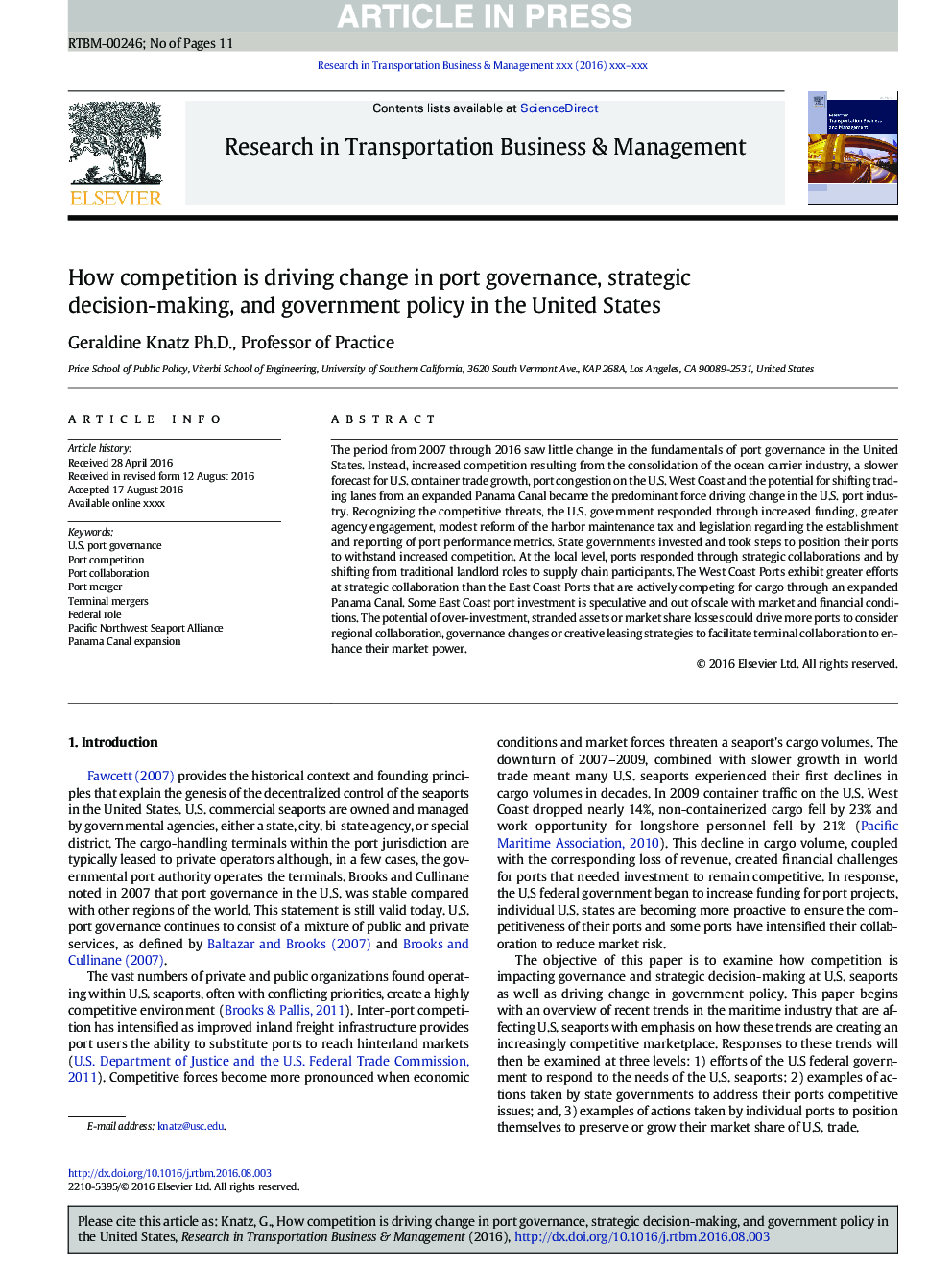| Article ID | Journal | Published Year | Pages | File Type |
|---|---|---|---|---|
| 5106673 | Research in Transportation Business & Management | 2017 | 11 Pages |
Abstract
The period from 2007 through 2016 saw little change in the fundamentals of port governance in the United States. Instead, increased competition resulting from the consolidation of the ocean carrier industry, a slower forecast for U.S. container trade growth, port congestion on the U.S. West Coast and the potential for shifting trading lanes from an expanded Panama Canal became the predominant force driving change in the U.S. port industry. Recognizing the competitive threats, the U.S. government responded through increased funding, greater agency engagement, modest reform of the harbor maintenance tax and legislation regarding the establishment and reporting of port performance metrics. State governments invested and took steps to position their ports to withstand increased competition. At the local level, ports responded through strategic collaborations and by shifting from traditional landlord roles to supply chain participants. The West Coast Ports exhibit greater efforts at strategic collaboration than the East Coast Ports that are actively competing for cargo through an expanded Panama Canal. Some East Coast port investment is speculative and out of scale with market and financial conditions. The potential of over-investment, stranded assets or market share losses could drive more ports to consider regional collaboration, governance changes or creative leasing strategies to facilitate terminal collaboration to enhance their market power.
Keywords
Related Topics
Social Sciences and Humanities
Business, Management and Accounting
Business and International Management
Authors
Geraldine (Professor of Practice),
